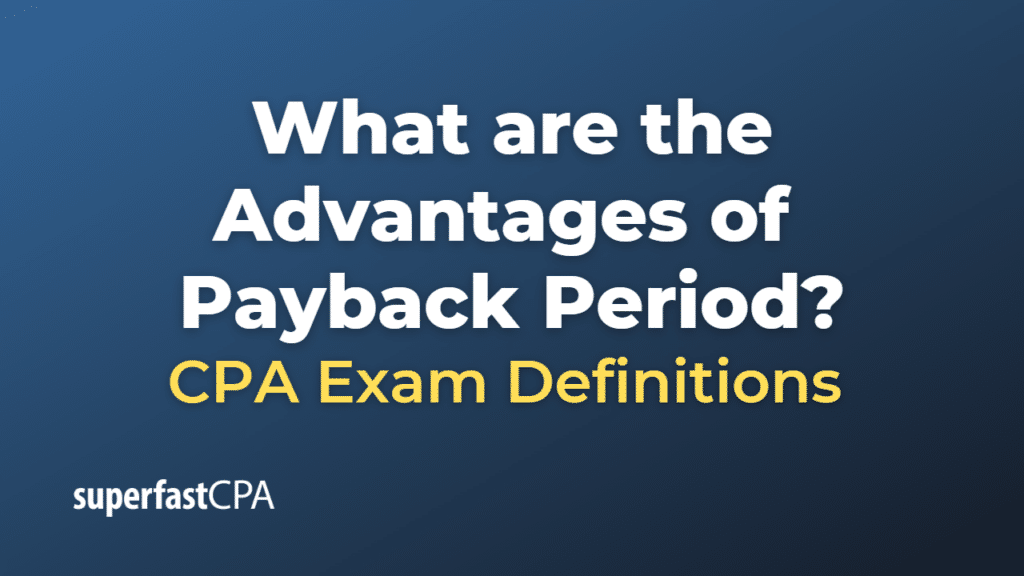Advantages of Payback Period
The payback period is a simple capital budgeting method that measures the time it takes for an investment to recoup its initial cost. It is calculated by dividing the initial investment by the annual cash inflows generated by the project. While the payback period has limitations, it offers several advantages:
- Simplicity: The payback period is easy to understand and calculate. It does not require complex calculations or advanced financial knowledge, making it accessible to non-financial managers and stakeholders.
- Liquidity focus: The payback period emphasizes the importance of liquidity and cash flow. Projects with shorter payback periods generate cash inflows more quickly, which can be advantageous for companies facing cash constraints or seeking to minimize cash flow risk.
- Risk assessment: Shorter payback periods are generally perceived as less risky because the investment is recovered sooner. The payback period can be used as a preliminary risk assessment tool, allowing managers to quickly compare projects and eliminate those with unacceptably long payback periods.
- Capital rationing: In situations where a company has limited resources to invest, the payback period can help prioritize projects. Projects with shorter payback periods may be preferred as they enable the company to recover its investment sooner and reinvest in other opportunities.
- Easy communication: The payback period is an easily communicated metric that can be shared with various stakeholders, including investors and employees, to provide a quick understanding of a project’s potential return.
However, it’s important to note that the payback period has limitations, such as not considering the time value of money or the cash flows that occur after the payback period. It’s generally best to use the payback period in conjunction with other capital budgeting methods like Net Present Value (NPV) or Internal Rate of Return (IRR) for a more comprehensive analysis.
Example of the Advantages of Payback Period
Let’s consider a simple example to illustrate the payback period concept.
Company A is considering investing in a new project that requires an initial investment of $100,000. The project is expected to generate the following cash inflows for the next five years:
- Year 1: $25,000
- Year 2: $30,000
- Year 3: $35,000
- Year 4: $40,000
- Year 5: $45,000
To calculate the payback period, we’ll determine the time it takes for the project to recover the initial investment of $100,000 through the annual cash inflows.
Cumulative Cash Inflows:
- Year 1: $25,000
- Year 2: $25,000 + $30,000 = $55,000
- Year 3: $55,000 + $35,000 = $90,000
- Year 4: $90,000 + $40,000 = $130,000
By the end of year 3, the project has not yet recovered the initial investment of $100,000. However, in year 4, the cumulative cash inflows reach $130,000, which is greater than the initial investment.
To find the exact payback period, we can calculate the fraction of year 4 required to recover the remaining $10,000 ($100,000 – $90,000):
$10,000 (remaining investment) / $40,000 (Year 4 cash inflow) = 0.25
So, the payback period for this project is 3.25 years (3 years + 0.25 of year 4).
This example demonstrates how the payback period helps assess the time it takes for a project to recoup its initial investment. Company A can use this information, along with other capital budgeting methods, to evaluate the project’s financial viability and compare it with other investment opportunities.













